If you’ve ever owned a Plecostomus (commonly known as a Pleco), you know how important it is to provide the correct diet for this diverse group of fish. Some fish keepers often wonder what plecos eat in the wild. To provide an answer to this question, as well as some helpful diet tips, we’ll take a look at the different types of food plecos to like to eat and how to provide them in your aquarium.
What Are Plecostomus Fish?
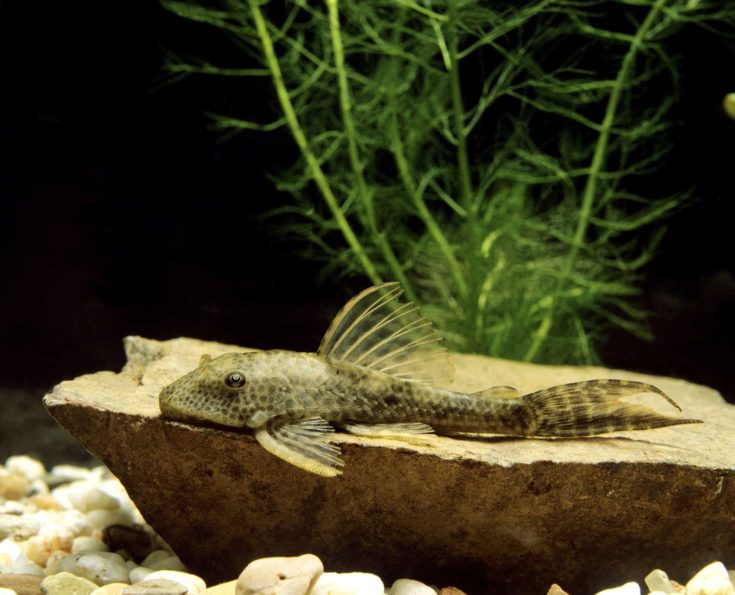
Plecostomus fish (Hypostomus plecostomus) also known as “plecos” are a common species of fish that originated in the Amazon River Basin. These suckermouth catfish are often kept by aquarium hobbyists because their algae-eating capabilities make them perfect tank cleaners. Plecos get their name from the Greek word “plekein” which means “to suck”, and its Latin word “ostomus” which means mouth.
Plecostomus has a cylindrical body that tapers off at the end. They have a large, flat head with a protruding lower jaw that is covered in many small, sharp teeth. They also have two pairs of barrels (whiskers) on their upper and lower lips which they use to sense their surroundings and forage for food.
Common pleco species include the bristlenose pleco, royal pleco, clown pleco (panaque maccus), and zebra plecos. Though there are many categories of pleco, the most common variety kept in home aquariums is the algae-eating suckerfish. These are a type of fish that is bred for their ability to clean an aquarium, which is why they are popular pets for fish enthusiasts.
What Do Plecostomus Eat?
Plecostomus are scavengers by nature and will eat just about anything they can find. Most plecos are herbivorous or omnivorous, but there are several carnivorous pleco species such as the goldie pleco and leopard cactus pleco.
To help you with your pleco diet, we’ve created a guide of what plecos eat, to help you understand the ideal foods for your pet. Our food guide includes recommendations for herbivorous, carnivorous, and driftwood-eating plecos. If you own an omnivorous species, simply feed them a mix of both plant and meat-based foods!
Herbivores
Herbivorous plecos rely solely on the plant-based matter as a food source. This type of pleco is the most common and can be found in most pet stores. Here are some types of food you can feed your herbivorous pleco:
1. Algae
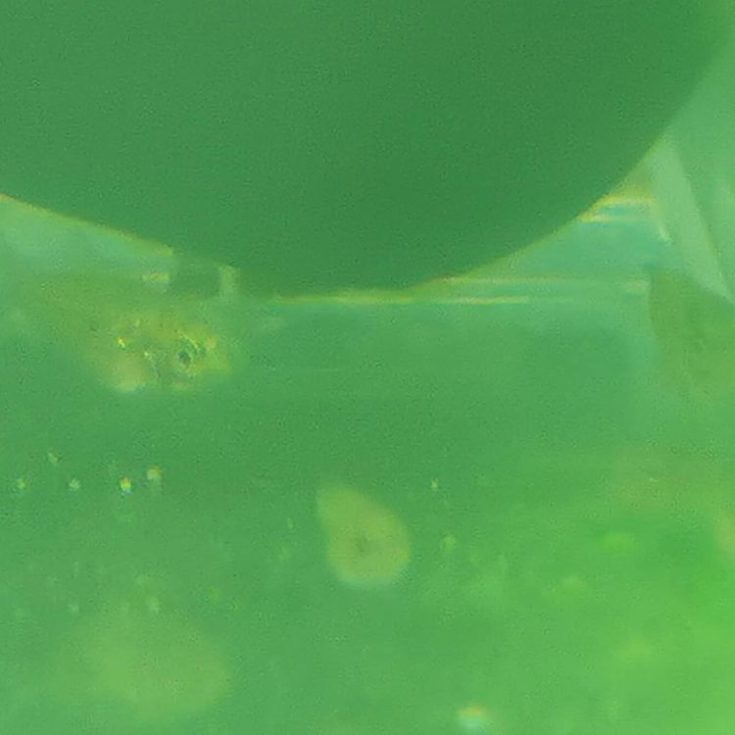
Whether you opt for algae wafers or fresh algae, your herbivorous pleco will love to munch on some green! Algae can be found growing naturally in most aquariums and is a great way to provide your pleco with fiber in their diet. Just be sure to avoid feeding your pleco any red or black algae, as these types of algae are toxic to algae eaters.
You can either let your algae grow naturally in your tank or you can purchase an algae wafer from your local pet store. Another alternative is to grow your own algae. You can grow algae by placing a few pieces of driftwood or rocks in your tank and letting them sit for a week or two. Once the wood has been growing for a while, you should start to see some green hair-like plants growing on its surface.
2. Zucchini
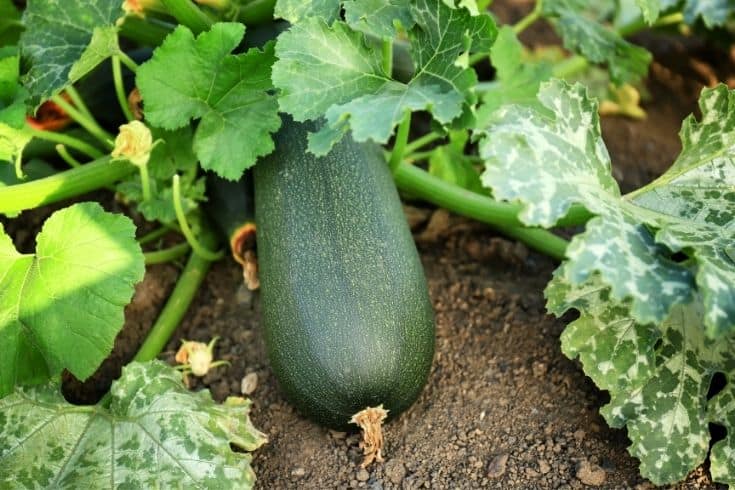
What’s a healthier option than junk food for your herbivorous pleco? A fresh zucchini! Zucchini is a great source of dietary fiber and is also low in fat and calories. Cut up a few chunks of zucchini and let them float in your aquarium for your pleco to snack on.
If your plecos aren’t able to finish all of the leftover zucchini in one sitting, remove all uneaten pieces from your tank to avoid rotting and fouling the water. It’s one thing to have a messy aquarium, but it’s another thing to have a smelly one!
3. Cucumber
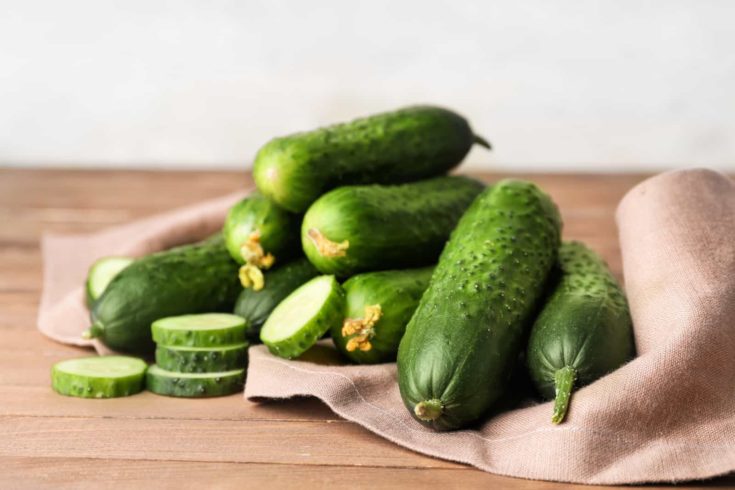
A slice of cucumber floating in the aquarium is a great snack for most herbivorous plecos. Cucumbers are rich in vitamin K, B6, potassium, magnesium, and silicon dioxide. These nutrients can help keep your pleco’s scales and bones healthy, and can even prevent holes in their side.
Cucumbers will also give your aquarium that fresh cucumber scent we all love! If you’d rather not use a whole cucumber for your filter feeders, slice it in half and let the other half sit in the fridge for later use.
4. Broccoli
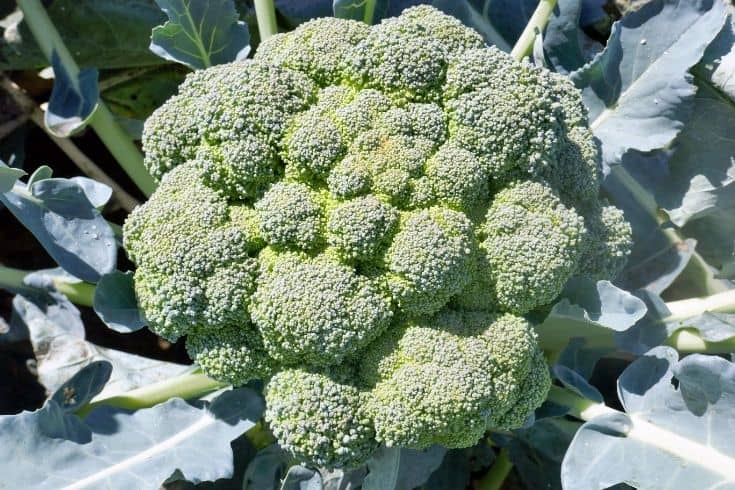
A proper pleco diet can be hard to maintain, so it’s best to provide your algae eater with a mix of different food options. Broccoli is a great source of vitamins K and A as well as dietary fiber. It can also help prevent constipation, which is especially important given that many species of pleco require a high-fiber diet.
Though it can be tempting to dunk an entire head of broccoli in your aquarium, we recommend only placing a few pieces in at a time. These may be excellent foods, but moderation is still the key!
5. Squash

As far as vegetable groups go, squashes are a great choice for herbivorous plecos. Squash is a great source of dietary fiber, vitamin A, and potassium, making them one of the yummiest food options for plecos that we know of.
To serve, slice up a few chunks of butternut squash and let them float in your aquarium. If you have particularly voracious pleco, you can also try serving them boiled or mashed squash. We guarantee your pleco will consider squash one of their favorite foods in no time!
6. Omega One Veggie Rounds
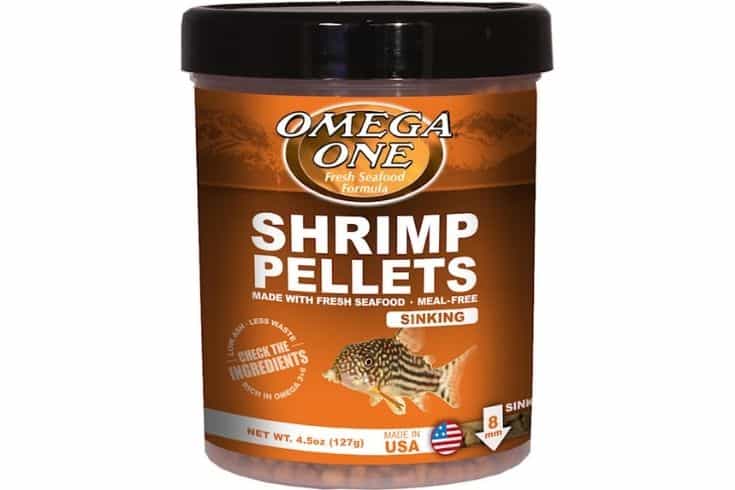
The food options we’ve listed thus far are all excellent ways to feed your herbivorous pleco. But, if you’re looking for a convenient solution, consider purchasing vegetable rounds from your local fish stores. These will make sure that both you and your pleco are getting the proper nutrition from food sources!
The other great thing about this source of food is that it has a longer shelf life than most fresh vegetables. So, if you find yourself running out of time to prepare a fresh snack for your pleco, these rounds can be a lifesaver!
7. Carrot
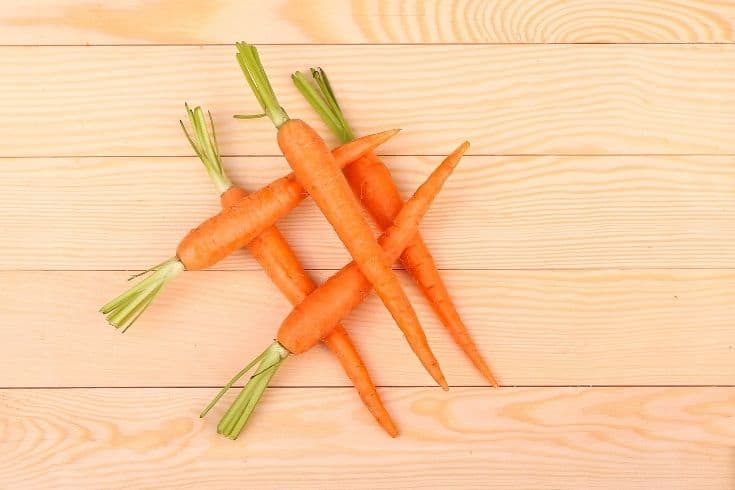
Aquarium fish love to nibble on carrots! Not only are they a good source of beta-carotene, vitamin A, and dietary fiber, but they’re also low in toxins. This means that even if your pleco overindulges on carrots, they’re unlikely to experience any adverse effects.
To feed your carrot-loving pleco, simply drop a few slices into the aquarium. Your fish will appreciate this yummy snack, and you’ll love watching them munch away! Alternatively, you can incorporate carrots into homemade food for your fish. Check out these recipes for some ideas!
8. Romaine
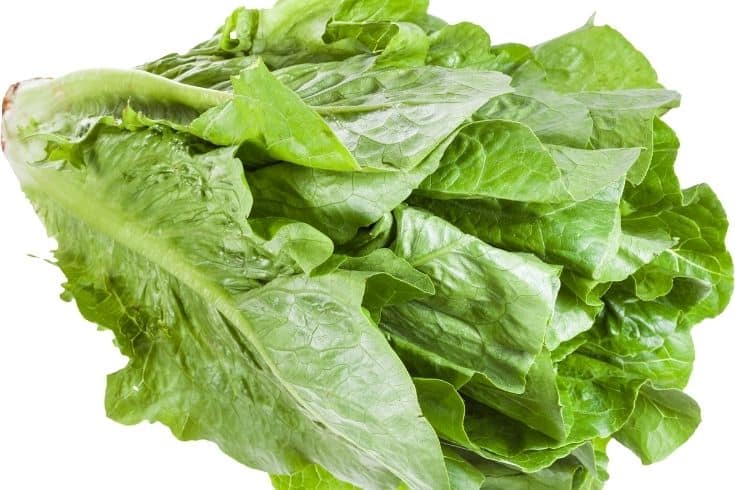
Romaine lettuce isn’t just for humans! This leafy green is a great source of vitamins A and K, as well as dietary fiber. The fact that it is mostly water makes it a great snack for plecos that are prone to constipation.
To serve, simply drop a few leaves into your aquarium or store them in the fridge until you’re ready to feed. If you don’t have any romaine lettuce on hand, other lettuce varieties can be substituted in a pinch. Just make sure to avoid iceberg lettuce, as it is low in nutritional value.
9. Sweet Potato
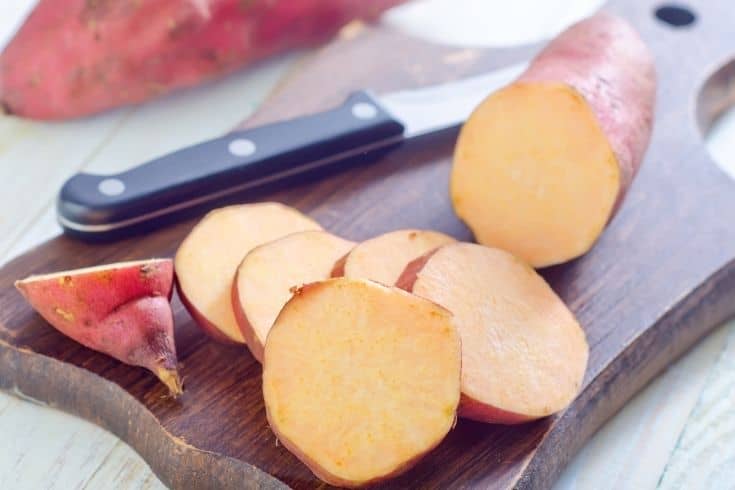
Sweet potatoes are often considered one of the most nutritionally complete vegetables around. This tuber is a great source of dietary fiber, beta-carotene, vitamin C, and potassium, which are all essential nutrients for plecos. And, since they’re relatively low in toxins, they make a safe snack for your fish.
To give your herbivorous plecos a yummy treat, try cutting up a sweet potato into small pieces and dropping them into the aquarium. You can also let them float in the water to eliminate food competition between your plecos and other fish.
Carnivores
Though a typical pleco diet is composed of algae and plant matter, not all plecos are herbivores. Some are omnivorous while others are entirely carnivorous! If you have carnivorous plecos in your aquarium, it’s important to feed them a high-protein diet that is rich in calcium. Here are some great ways to do just that so you have a healthy pleco on your hands!
1. Shrimp Pellets
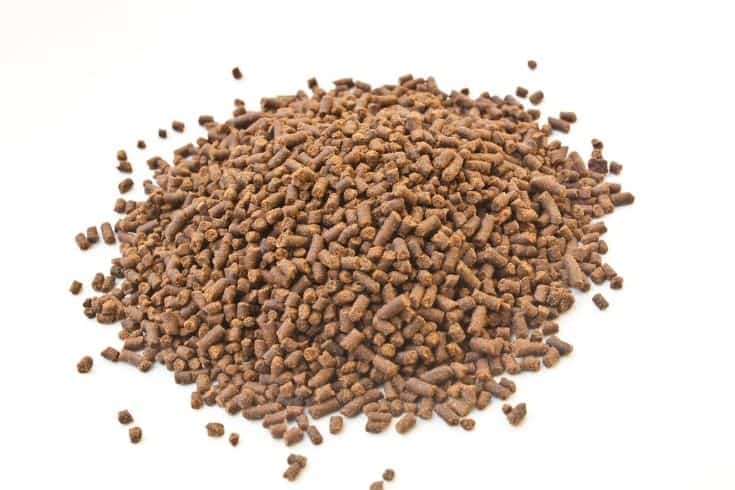
Think of shrimp pellets as raw shrimp in a more shelf-stable form. This type of fish food is a great way to provide your carnivorous pleco with a balanced diet. It is high in protein, calcium, and other essential nutrients that help keep your fish healthy.
Typically, these pellets are presented in a compressed form. To make feeding easier, you should soak them before dropping them into the aquarium. If your fish refuses to eat these pellets after thoroughly soaking them, try crushing them into smaller pieces or crumbling them onto the substrate.
2. Repashy Community Plus
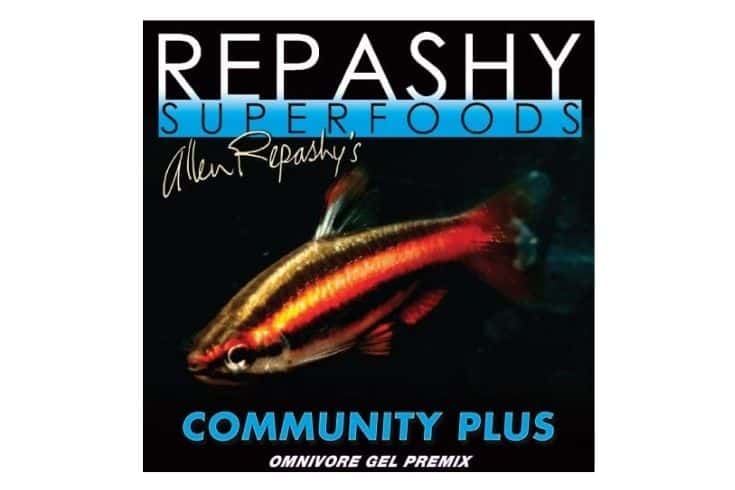
Repashy Community Plus is a fish food designed to meet the dietary needs of plecos, snails, bottom-feeding fish, and other organisms. It’s made using high-quality ingredients that are low in toxins, making it a safe food for your fish.
To use, simply sprinkle the desired amount into your aquarium. You can also mix it with other foods to create a custom diet for your fish. As with any other fish food, make sure to store it in a cool, dry place to prevent spoilage.
3. Omega One Shrimp Pellets
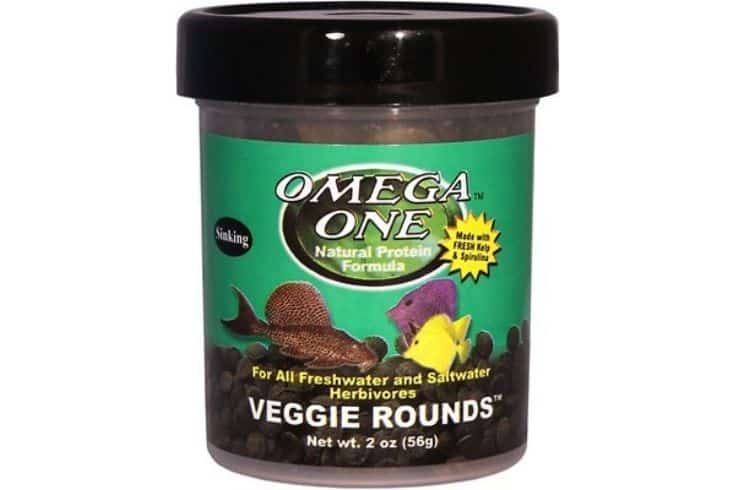
Pleco fish keepers rejoice, Omega One has a sinking shrimp pellet especially for you! As its name suggests, this shrimp pellet is made using a high-quality shrimp meal that’s perfect for carnivorous fish. In fact, it is designed to meet the nutritional needs of carnivorous fish, containing all the essential nutrients they need to thrive.
In addition, it also contains natural color enhancers, meaning your pleco will be kept in tip-top shape with this food! Omega One is known for creating high-quality fish foods that are free of toxins and fillers. They’re even freeze-dried to maintain their nutritional value and flavor.
4. Frozen Bloodworms
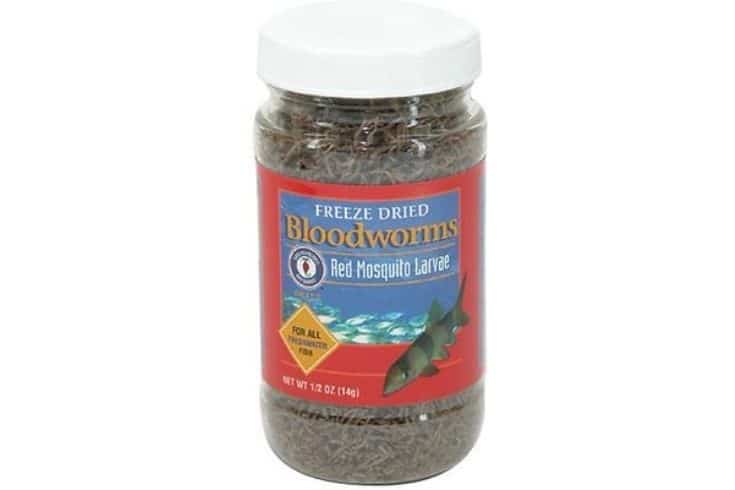
As far as frozen foods go, bloodworms are a pleco fish’s delight. They provide all the nutrients that your pleco needs, as they’re a natural source of animal protein. In fact, they’re so nutritious and well-balanced that they’re also used to feed many other types of large, carnivorous fish!
The fact that these bloodworms are frozen makes them easier to store and defrost at will. To defrost, simply place them in a cup of room-temperature water for about 15 minutes. Once they’re soft, you can feed them to your fish!
Note: Thawing cubes of frozen bloodworms in your tank directly isn’t recommended, as they may clog your filter.
5. Frozen Brine Shrimp
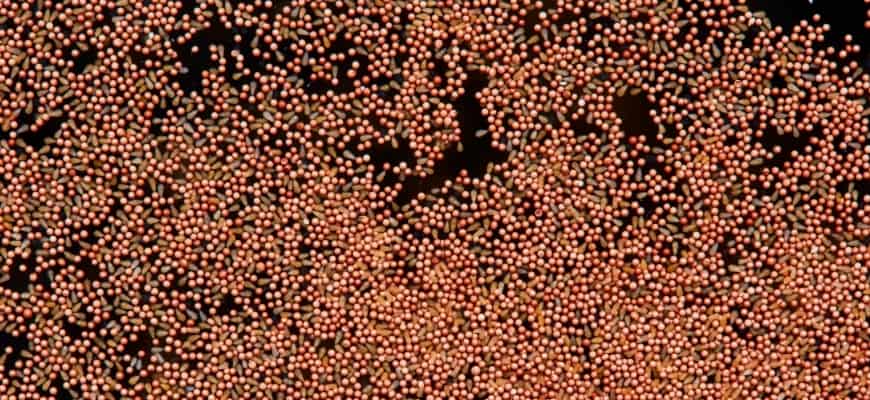
Brine shrimp is yet another great example of meaty foods that plecos love. These shrimp are high in protein and other essential nutrients, making them a perfect food for your fish. In addition, they’re also very easy to digest, making them ideal for Plecos and other sensitive fish stomachs.
Just like bloodworms, brine shrimp are frozen for easy storage and handling. To defrost, place them in a cup of room-temperature water for 15 minutes. Then, remove them with a spoon and feed them to your fish! Remember not to overfeed, as they may regurgitate some.
Wood Eating Plecos
Believe it or not, some plecos actually consume small fragments or pieces of driftwood as part of their diet. While this is perfectly natural, some wood-eating plecos are notorious for ingesting pieces of wood that are too big for their stomachs. As these fragments continue to rot inside their bodies, they may cause constipation or even death.
Therefore, it’s important to follow a few tips when feeding your pleco wood:
Driftwood Placed In The Aquarium
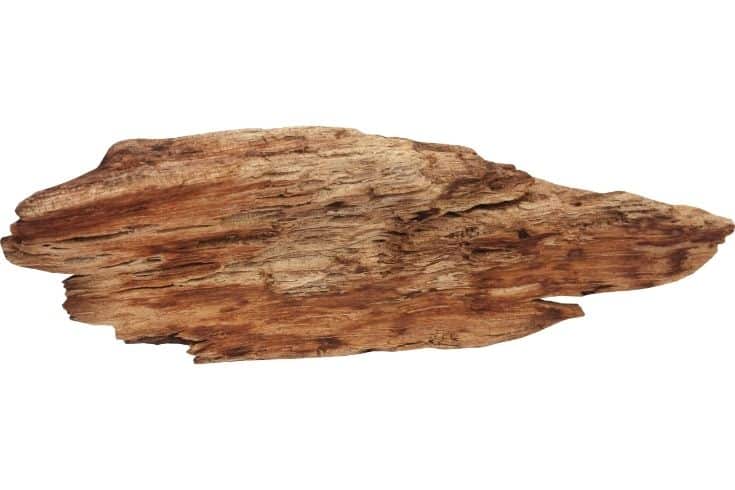
Many aquarists already feature pieces of driftwood as part of their aquarium decor. If you have wood-eating plecos in your tank, they might be feeding naturally on these pieces of driftwood. To keep them safe, you should opt for driftwood that’s been thoroughly cleaned and cured. This ensures that it will break down safely inside your aquarium.
In addition, it’s also important not to place too much driftwood in your tank. As driftwood breaks down, it may introduce excess nutrients and leach tannins into your tank. This causes black water, which is both unsightly and unhealthy for your fish. Bear in mind that tannins cause the pH of the water to fall, which can be catastrophic for some fish.
The final tip seems a little obvious, but if your plecos enjoy nibbling on wood, please use real driftwood instead of man-made wood products! Beyond just having a different look and feel to real wood, synthetic driftwood is often made from ingredients that are toxic to aquarium fish. Given that many fish turn to driftwood for refuge, it’s important to opt for something that’s safe and natural.
Conclusion
As you can see, feeding your plecos is no simple task. While there are many great options to choose from, selecting the right ones for your tank and fish is the key. If you feel overwhelmed by the sheer number of options available, don’t be afraid to consult an expert or reach out for advice. Most importantly, remember to have fun!
We hope you’ve found this article helpful. If you have any questions or feedback, please feel free to share it in the comments section below. We love hearing from our readers, so please continue to send us your questions and feedback! Thanks for reading, and happy holidays!
